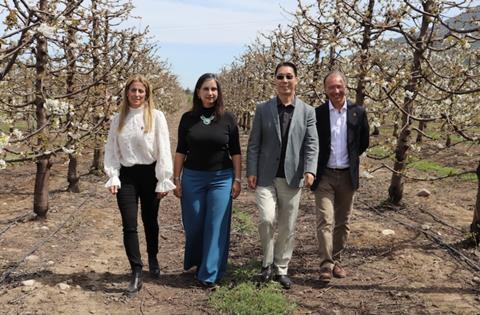Shipments set to achieve a new record due to surge in new plantings
Chilean cherry exports are forecast to reach a record 657,935 tonnes, equivalent to 131.6mn (5kg) cartons, in 2024/25, representing an increase of 59 per cent on last season.

The estimates were announced by the Chilean Cherry Committee at the annual Cherry Blossom event in Chimbarongo this week, which marks the official start of the Chilean cherry season.
The committee’s executive director, Claudia Soler, said the forecast is based on the data provided by the members of the Cherry Committee, between 23 September and 1 October, and could be subject to change during the season.
“Last season was one of the most complicated that the sector experienced in terms of climate, which resulted in export volumes remaining unchanged on the previous campaign. This season, the agro-climatic conditions have been good and we therefore anticipate that we will achieve the growth that we did not have last season, plus the expected increases for this one,” Soler said.
Chile has undergone a major expansion in planted area, peaking between 2019 and 2021. As a result, significant jumps in production are expected between the 2023/24, 2024/25 and 2025/26 seasons.”
In terms of varieties, Santina is expected to account for 38.3mn cartons, an increase of 121 per cent on last season. Lapins shipments are projected to reach 45.7mn cartons, up 29 per cent on 2023/24; Regina volumes are up 53 per cent at 24.3mn cartons and the rest of the varieties will make up the remaining 23.2mn cartons.
China will continue to be the main destination market for our cherries, but Soler said the industry would continue to diversify exports to other markets both inside and outside Asia.
The committee has earmarked more than US$9mn for marketing this year, an increase of 118 per cent compared to last season.
“We are convinced that this is the year to carry out powerful campaigns that stimulate greater purchases from our current consumers and an increase in new consumers. These promotions will be especially focused on China, the US and South Korea. We will also begin to work with greater resources in India – if logistics allow it – and we will start a program in Brazil,” Soler said.



